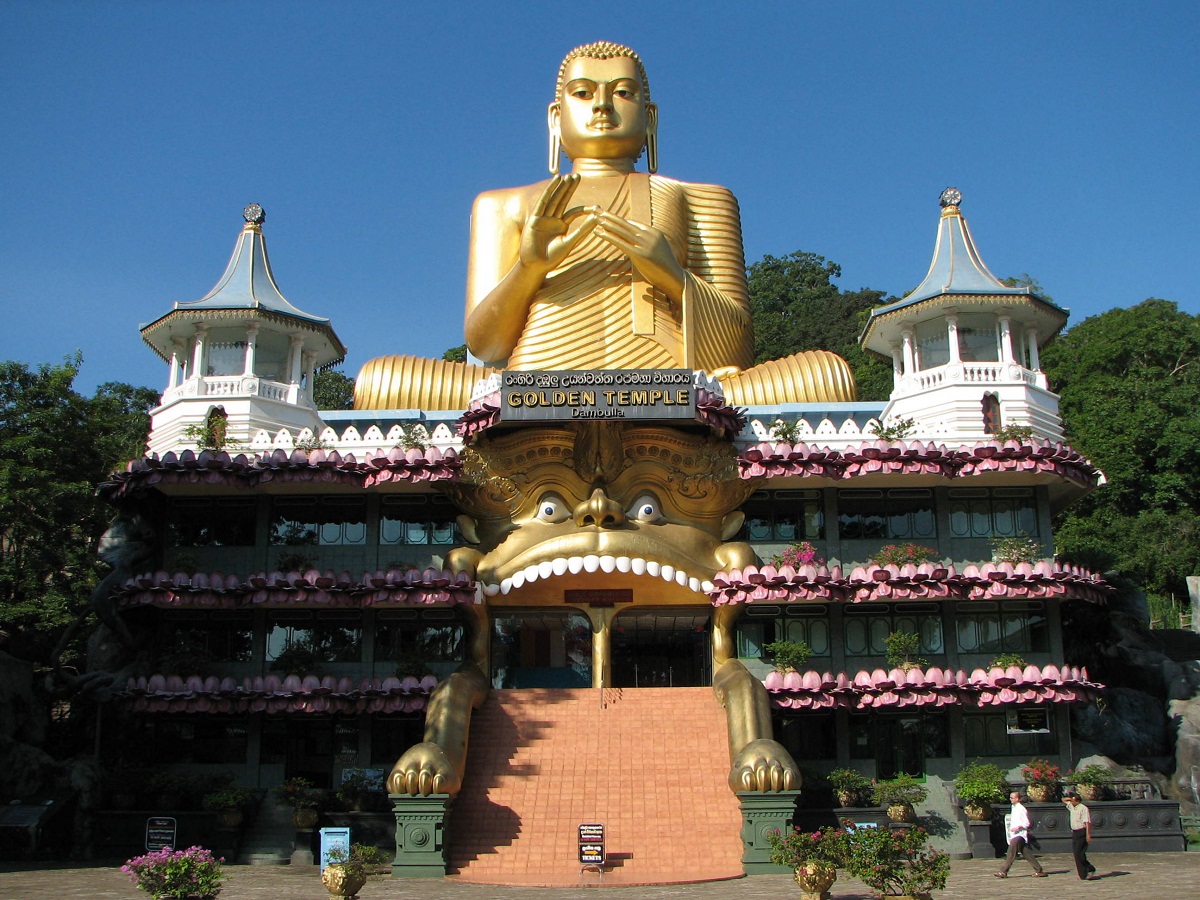
Dambulla Cave Temple Historical Facts and Pictures The History Hub
Dambulla Golden Rock Temple, also known as the Dambulla Cave Temple, is an ancient temple region situated in the central part of Sri Lanka, where plenty of time-old caves, rock temples, statues, paintings, and murals are the main attractions for the guests. Listed in UNESCO World Heritage list, Dambulla Cave Temples spreads over acres of land, which is still functional very well and one of the.
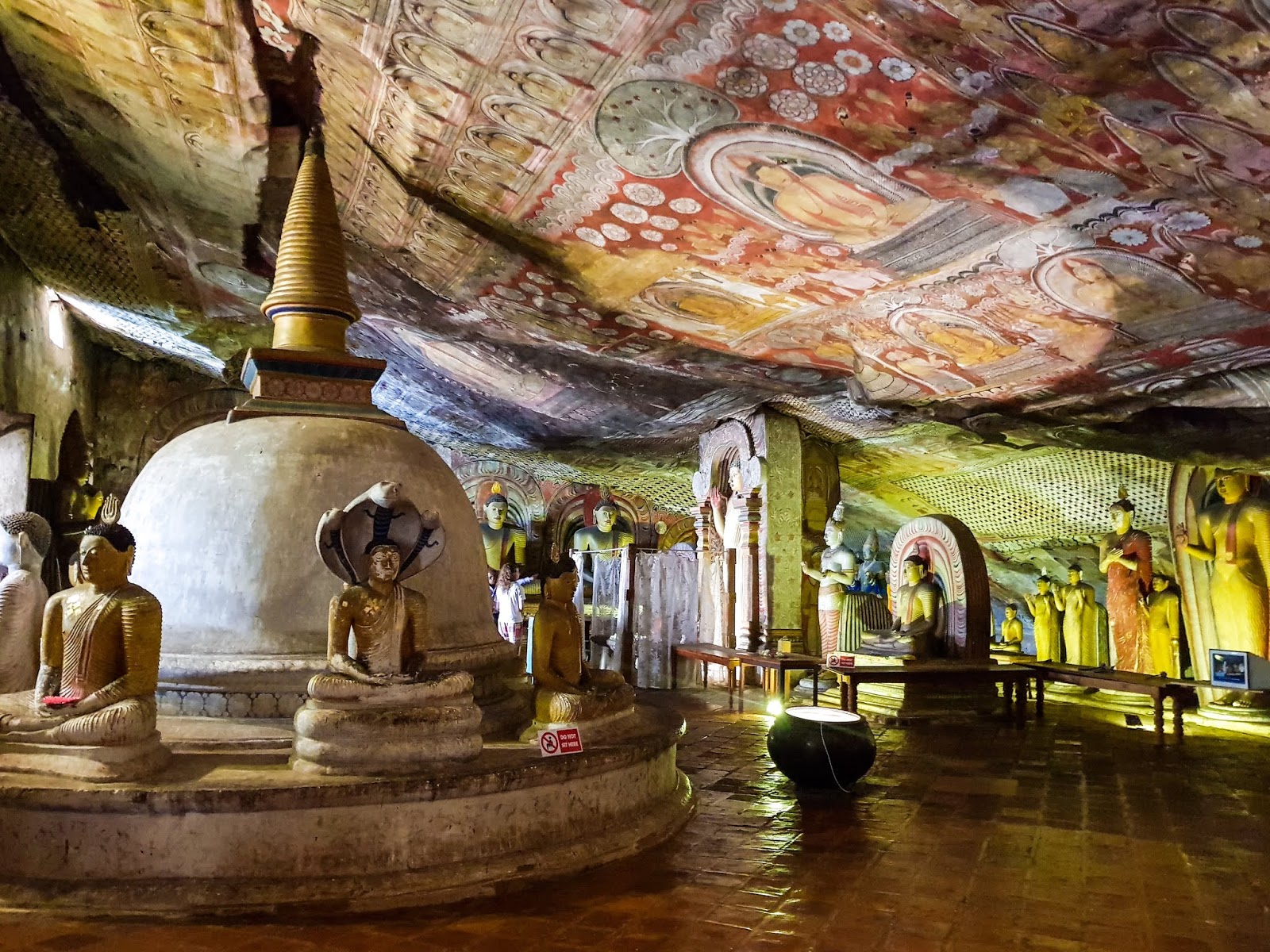
Dambulla Rock Cave Temple, Sri Lankan Magnificence and Splendour
The Dambulla Rock Cave Temple had first been constructed during the rein of King Vattagamini Abhaya ( 103 BC and 89-77 BC ). The Sinhalese often call him as King Valagamba. During a South Indian invasion the king had to abandon his Anuradhapura Kingdom . For 12 years, King Valagamba was in hiding and had frequented these caves for his safety.

Dambulla Cave Temple of Sri Lanka. ExploreLanka
Dambulla Cave Temple. It is the largest and best preserved cave temple complex in Sri Lanka. The rock towers 160 m (520 ft) over the surrounding plains. There are more than 80 documented caves in the surrounding. Major attractions are spread over 5.

Golden Temple of Dambulla, Sri Lanka Travel Sri Lanka Blog
Following the Masters, who had left the planet on March 31, 1993 and on January 6, 1994, taking with them the spiritual energy of the seven planets, the Solar Temple community was withdrawing. They had gone to another planet, burning their residences behind them to avoid contamination by the uninitiated. They wanted all the faithful to join.
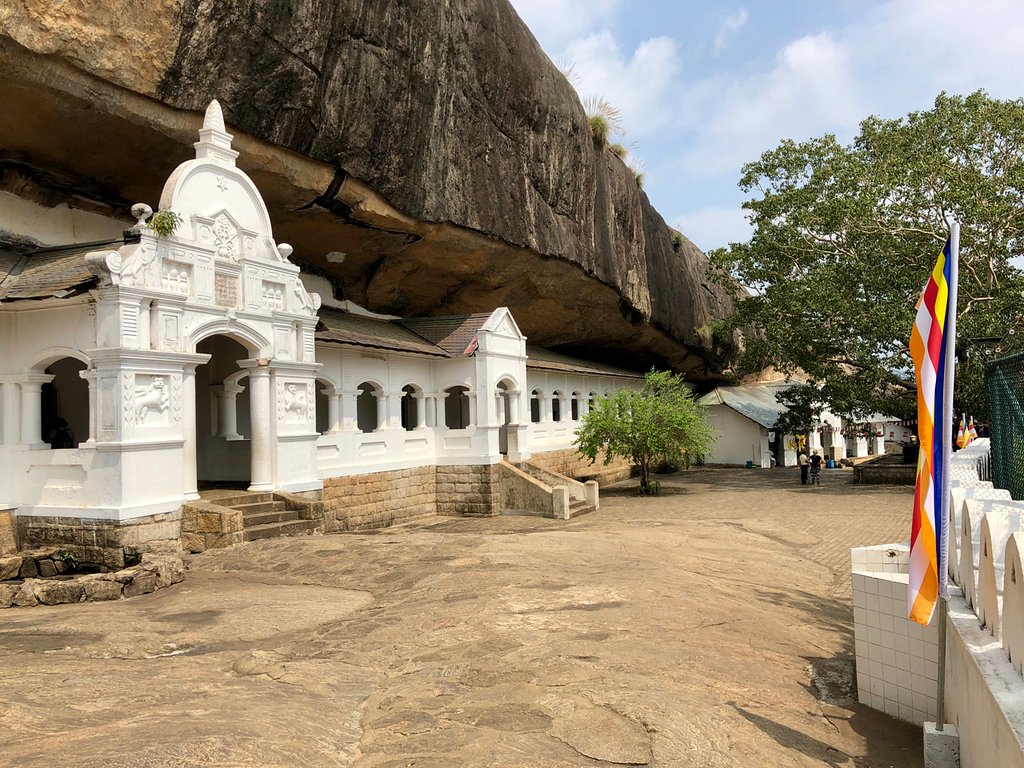
Dambulla Cave Temple (UNESCO World Heritage site) Sri Lankan Travel Blog
Welcome to the captivating world of the Dambulla Royal Cave Temple, also known as the Dambulla Golden Rock Temple. Nestled in the heart of Central Sri Lanka, this ancient temple region boasts a wealth of time-old caves, rock temples, exquisite statues, breathtaking paintings, and awe-inspiring murals, all waiting to mesmerize its visitors..

Dambulla Cave Templetravel Guide 2023 SIGIRIYA Sri Lanka Official
A king's retreat. Carved into the colossal embrace of a 160m high granite rock, the Dambulla Cave Temple in Matale traces its origins back over 2,000 years. Before it became a Buddhist temple complex, the cave had already cemented its place in Sri Lankan history. It was said to have initially been a refuge for King Valagamba (also referred to.

SIGIRIYA & DAMBULLA CAVE TEMPLES 48 HOURS EXPLORING THE CULTURAL
History of Dambulla Cave Temple, Sri Lanka. Located in the Matale district, Dambulla Cave Temple is a set of more than 80 large rock-cut, cave temples in Central Sri Lanka. However, majority of the attractive murals and Buddha statues are concentrated in 5 main shrines which are the most impressive.
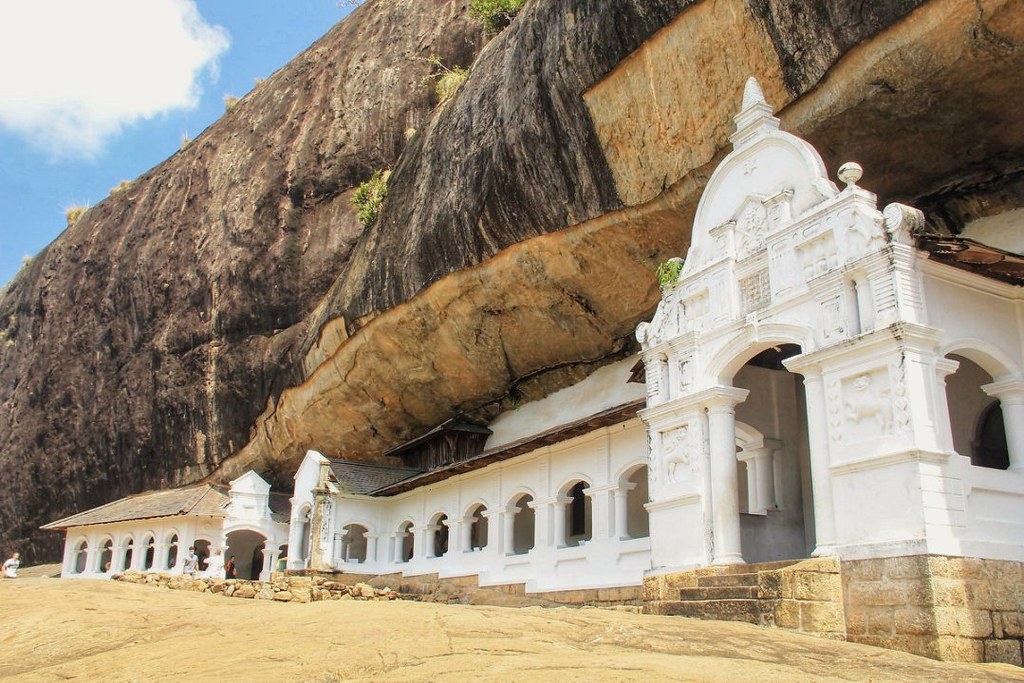
Dambulla Cave Temple One of Sri Lanka's Ancient Wonders Gallop
The Dambulla Cave Temple is the largest and the best-preserved pilgrimage site in Sri Lanka. The sacred place of worship is popularly known as Dambulla Rock Temple and Rangiri Dambulu Rajamaha Viharaya. In 1991, the place was declared a World Heritage Site by UNESCO and attracts tourists worldwide. It is an important site of worship for.
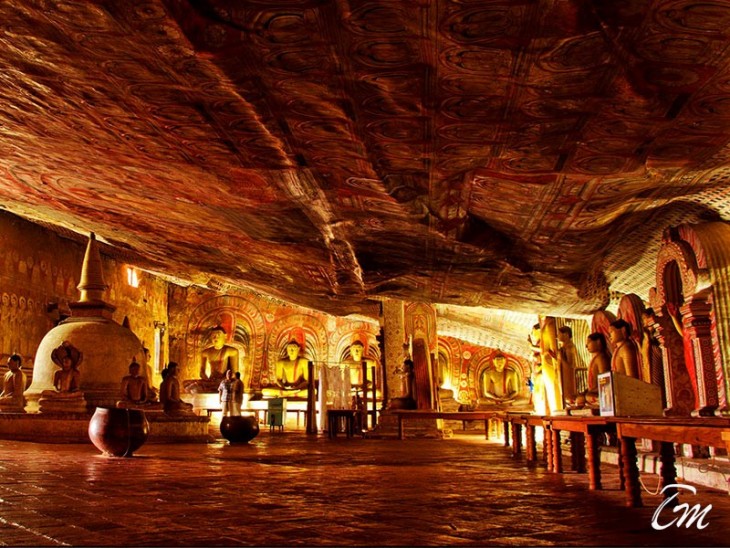
Dambulla Golden Rock Temple Tips to Visit Cave Temple
The beautiful Royal Rock Temple complex sits about 160m above the road in the southern part of Dambulla. Five separate caves contain about 150 absolutely stunning Buddha statues and paintings, some of Sri Lanka's most important and evocative religious art.

Dambulla Rock Cave Temple, UNESCO World Heritage Site, Central Province
Dambulla's famed rock cave temple is an iconic Sri Lankan image - you'll be familiar with its spectacular Buddha-filled interior long before you arrive in town. Despite its slightly commercial air, this remains an important holy place and should not be missed.
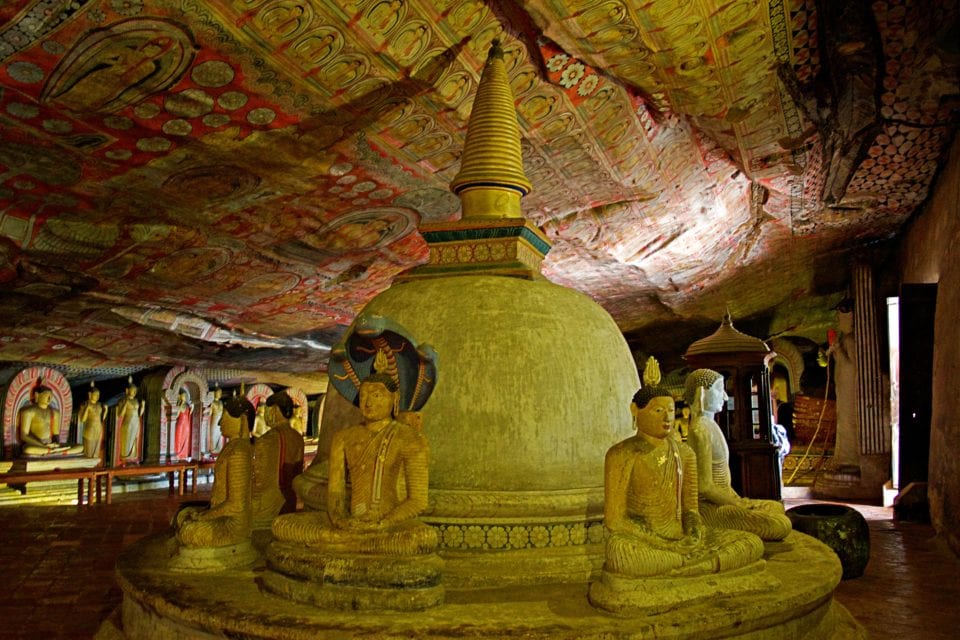
Dambulla Cave Temples Ten Things You Need to Know Before Visiting
And what is the Golden Temple? The Dambulla Cave Temple and the Golden Temple are one temple complex. The Golden Temple is at the bottom of the big rock, in which the 5 caves, known as the Cave Temple, are carved. Until 2016 was the official entrance and ticket counter for Dambulla's Cave Temple at the Golden Temple. So every visitor came to.

Dambulla Temple and Sigiriya Fortress beauty World Best Tourism
Located in the Central Province of Sri Lanka, the town of Dambulla is known for its iconic cave temple.This UNESCO World Heritage Site, which also goes by the name Golden Rock Temple, is definitely worth a visit.The place will leave you speechless with its spectacular Buddhist murals, detailed colorful paintings, and over 100 Buddha statues.
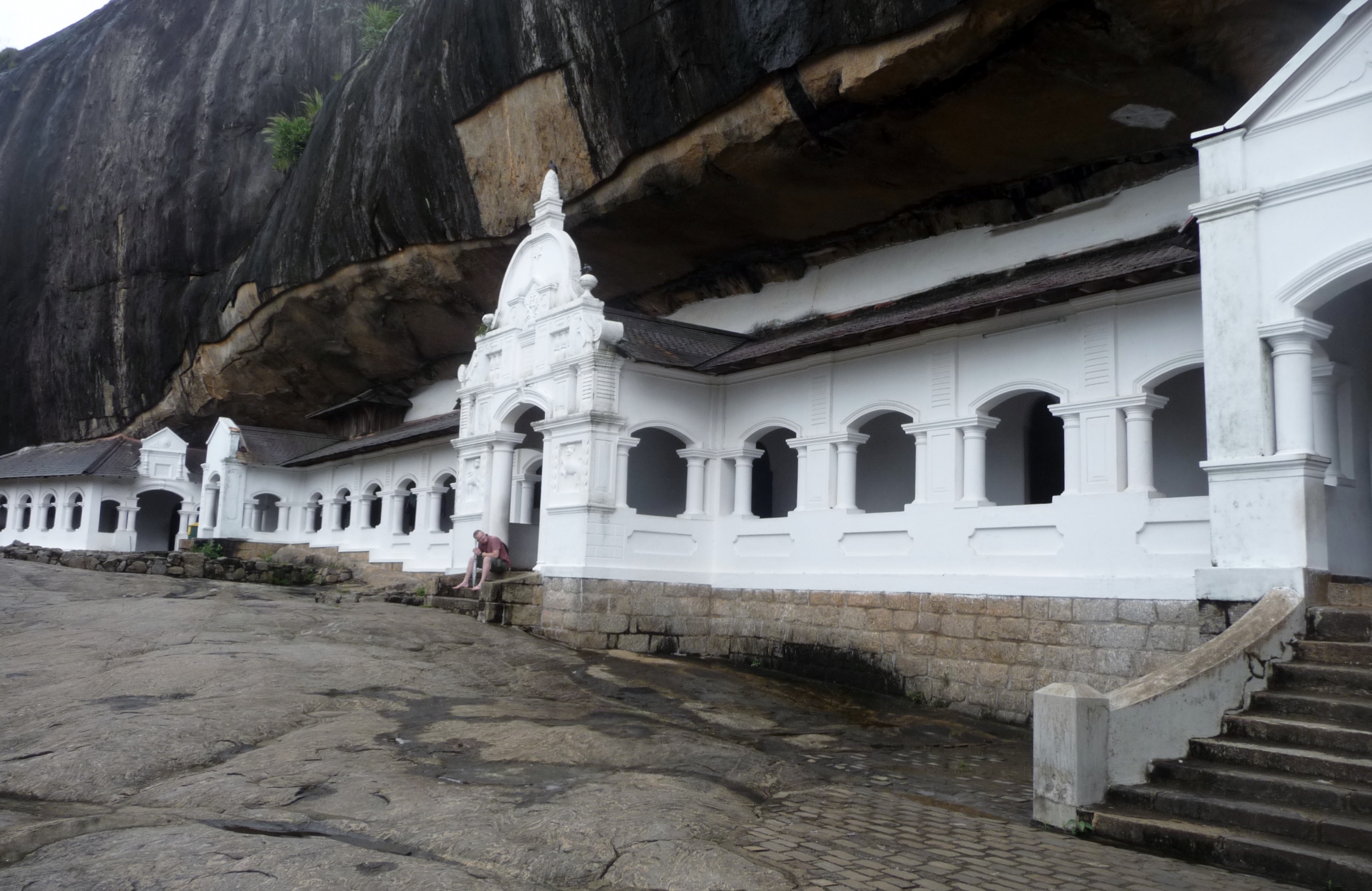
Dambulla Rock Cave Temple UNESCO World Heritage site Well Known Places
Dambulla, the sacred place of Buddha statues. Dambulla town is best known as a Cave temple complex. It is located in Matale district, in the central part of Sri Lanka, about 70 kilometres north of Kandy town, and 148 kilometres northeast of Colombo town. The ancient rock fortress Sigiriya is very close, about 17 kilometres.

The Rock Temple of Dambulla Travellinn
The Dambulla Cave Temple is also known as the Golden Temple of Dambulla. It is the largest and best-preserved cave temple complex in the country, with the rock towering 160m over the surrounding plains. Inhabited since prehistoric times, it was in the 3rd century BC that a monastery was initially constructed at Dambulla.

ULTIMATE Guide to Visiting the Dambulla Cave Temples in Sri Lanka
You'll find the Dambulla Cave Temple in the city of Dambulla. Dambulla is located 160 km from Colombo, 105 km from Trincomalee, or 73 km from Kandy, Sri Lanka. The actual Dambulla Cave Temples are located up on top of a large rock that you must walk to. The walk takes about 20-minutes and involves climbing many stairs.
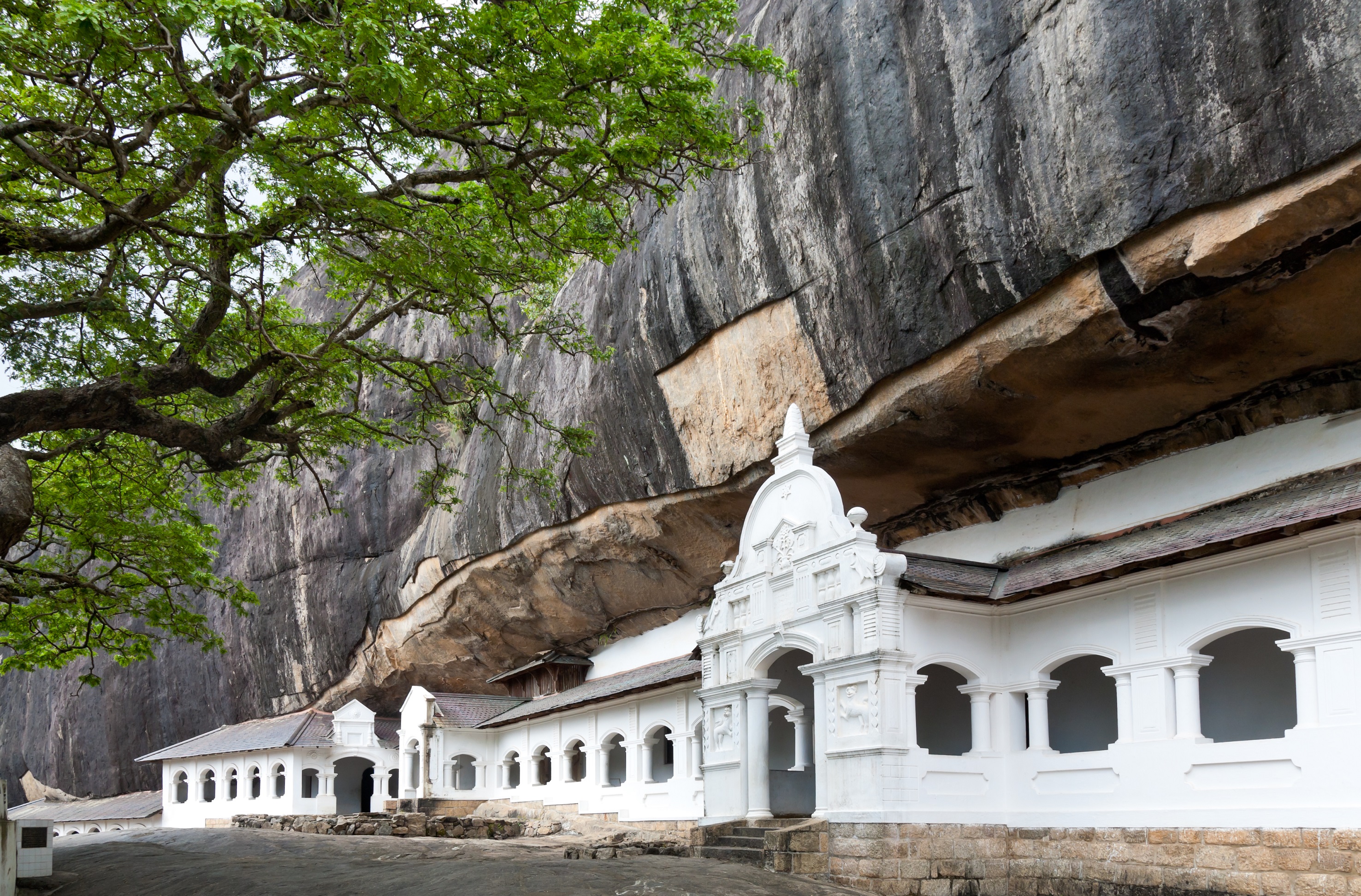
The Ultimate Bucketlist of Sri Lanka
The rock of Dambulla is the center of a Buddhist cave-temple complex established in the 3rd century B.C. and occupied continuously to this day. The site has been in continuous use for over 23 centuries, when it was occupied by a Buddhist monastic establishment, following the arrival of Buddhism on the island.